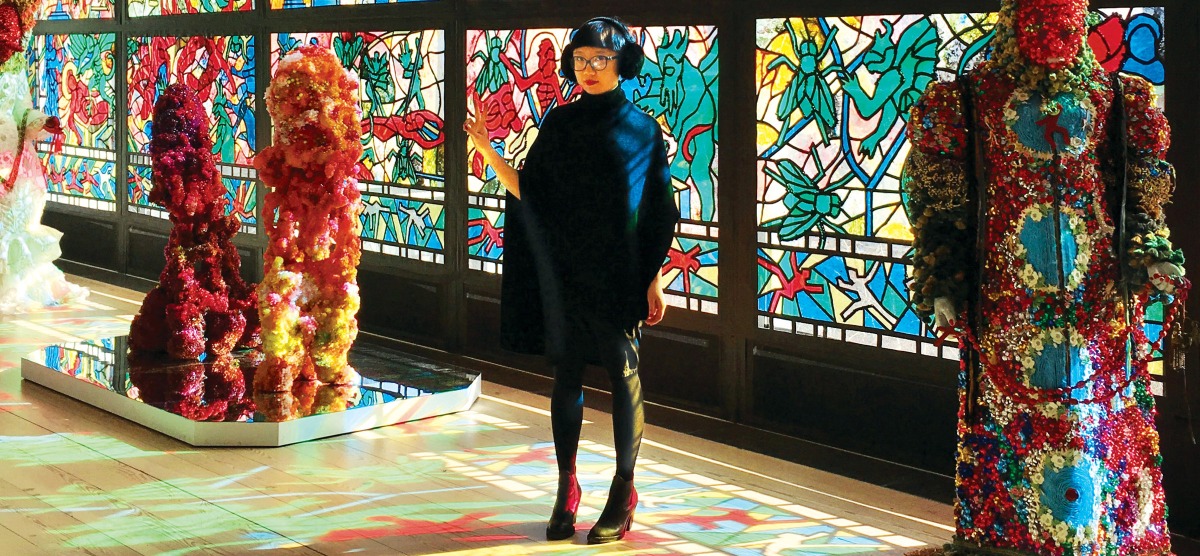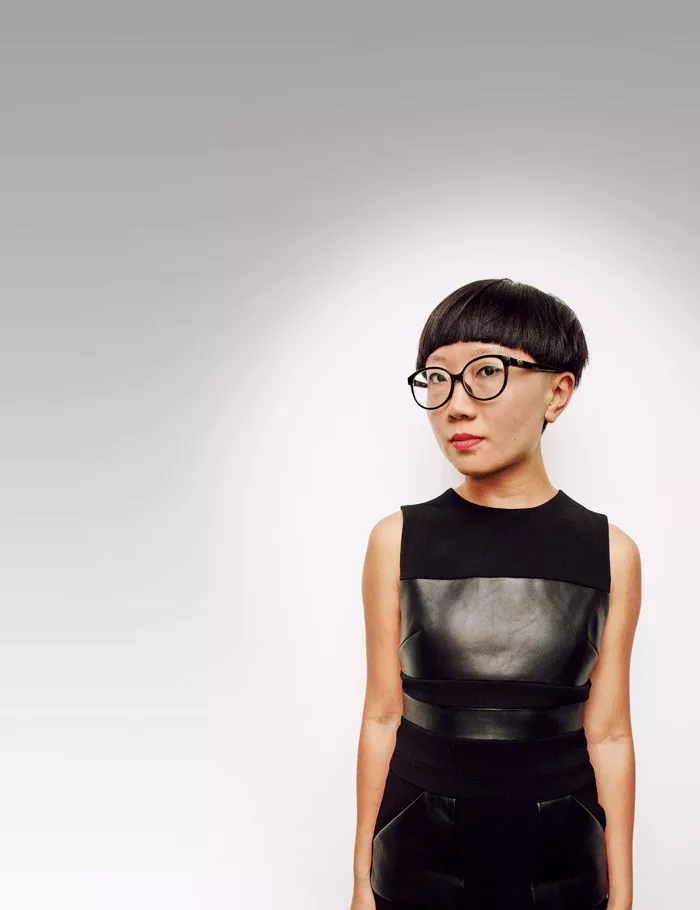
Where Artistry Meets Storytelling
Digital dynamo JiaJia Fei '08 brings a fresh approach to the New York art world.
The woman Artnet calls “a veritable art world social media sensation” returned to campus this spring to share her story and impeccable style.
JiaJia Fei ’08 came at the invitation of Bryn Mawr’s Leadership, Innovation, and Liberal Arts Center to talk with students about her high-powered career in the New York art world as director of digital at the Jewish Museum of New York.
The Bulletin’s Ayesha Mir ’17 sat down with Fei to discuss the art world, her career trajectory, and the power of digital storytelling.
The child of scientists, JiaJia Fei ’08 was drawn to art early, thanks in part to the free museums in Washington, D.C. (her hometown) and to a high school art class that taught her to “find reflections of the world in images.”
During her time at Bryn Mawr, she never imagined that she would create a new department at the Jewish Museum of New York as its first director of digital.
“I was taking art classes at Haverford and UPenn,” she says. “All of my professors were artists, and they were the ones taking us to art galleries. From those experiences, I became more entrenched in the art world.
“My goal was never to become an academic or get a Ph.D. in art history. I wanted to bring art to a broader audience—and a lot of that was done through technology.”
With that in mind, Fei started her career by landing an internship at Bryn Mawr’s Summer Multimedia Design Institute. There, she learned web design and HTML, which she describes as “the most important language I’ve learned.” In fact, she encourages students to learn how to code—even if just for fun.
Today, with more than 60,000 Instagram followers and nearly 10,000 on Twitter, Fei has what she modestly describes as “a pretty active” social media presence that spans the personal and professional.
“My job involves carrying out the mission of my institution with the tools of our time—on digital platforms,” she explains. “My personal social media presence is a visual diary of how I see, from travels to museum shows, and I consider both very authentic representations of brand identity.
“That’s the most important aspect of social media,” she continues. “It’s about delivering content that is authentic. Making an impact in this profession involves knowing your audience and tailoring your messaging strategy to reach those people.”
In an age when our first encounter with art is often through our devices, digital storytelling is revolutionizing the way we perceive it. As Fei explains, digital storytelling comes from the need to create a narrative.
“Art requires so much context for the average person to understand,” she says, “so I see my role as a translator and educator in using scholarly research as a starting point and making it more accessible to the broader public online through interpretation. Taking the time to explain why something matters, why an institution has decided to collect an object, preserve it, and define its relevance to humanity—that’s a really big gesture for museums. So we try to break down challenging topics such as conceptual art by chopping up the backstory into more digestible pieces.”
One common criticism of digitization is that it discourages people from going to museums. Fei argues that it should be up to the audience to choose how to experience art. “Our goal is to make the work accessible to as large an audience as possible,” she says. “Some people prioritize the in-person experience, and some experience art online on museum websites, often because they can’t physically go there themselves. Personally, I like to visit museums and go into more depth with a digital post-visit experience. But it shouldn’t be up to the museum to decide which one is better.”
For Fei, social media has enabled museums not only to connect with a wider audience but also to assert their relevance in a rapidly evolving world. “A lot of what we do on social media is about listening,” she explains.
“We look at what’s happening in the world at large. In the last few months with so much tension around politics, immigration, and refugees, we examined our collection to see how we could source objects on our website, such as photographs of immigrants coming to New York in the early 20th century, as a reminder about the history repeating itself in the present.”
“When the first travel ban got signed on Holocaust Remembrance Day, we shared a photograph of a ship carrying refugees that sailed to the U.S. from Germany during World War II. The U.S. denied everyone on board from entering because of its strict immigration policies at the time. It was estimated that a quarter of those people died in Nazi concentration camps.”
Quotable
JiaJia Fei '08 on Women in the Arts:
"During Women’s History Month, the National Museum of Women in the Arts in Washington, D.C., led a social media initiative called #5WomenArtists to challenge people to name five women artists. Even today, it’s shocking to think about the inequities faced by women artists and their lack of representation in major museum collections
"But while a majority of the staff working at museums are women, the higher levels of institutional leadership are male-dominated. According to a recent report from the Association of Art Museum Directors, female art museum directors still earn 73 cents for every dollar earned by male directors.
"As a graduate of an all-women’s college, I have always been conscious of gendered fields of study, particularly in the art world."
Published on: 05/10/2017
